
Compiled by London Swaminathan
Article No. 1961
Dated 29 ஜூன் 2015.
Uploaded at London time : 7-54
சுவாமியின் பொன்மொழி காலண்டர் – மன்மத வருடம்-ஆடி (ஜூலை 2015). இந்த மாதம் மேலும் 31 சம்ஸ்கிருத பொன்மொழிகளைப் படித்து மகிழுங்கள்.
இந்த பிளாக்—கில் இதுவரை தமிழிலும் ஆங்கிலத்திலும் ஆயிரத்துக்கும் மேலான தமிழ், சம்ஸ்கிருத பொன் மொழிகள் வெளியிடப் பட்டுள்ளன! படித்துப் பயன் பெறுக!!
முக்கிய நாட்கள்/ விழாக்கள்:–
ஜூலை 18: புரி ரத யாத்ரா; ரம்ஜான் ; 31- வியாச பூர்ணிமா/ குரு பூர்ணிமா. ஏகாதசி : 12 & 27; அமாவாசை- 15; பவுர்ணமி- 1 மற்றும் 31; முகூர்த்த நாட்கள்:– 6, 8
ஜூலை 1 புதன்கிழமை
அவசரோபசர்பணீயா ராஜான: — சாகுந்தலம்
ராஜா தரும் வாய்ப்பை நழுவவிடக்கூடாது:
ராஜ தர்சனம் தவிர்க்கப்படக்கூடாதது
(காற்றுள்ள போதே தூற்றிக்கொள்)
Make hay while sun shines
ஜூலை 2 வியாழக்கிழமை
அரண்ய ருதிதோபமம் (பஞ்ச தந்திரம்)
காட்டில் அழுதது போல (கடலில் கரைத்த பெருங்காயம் போல பலன் தராத செயல்)
ஜூலை 3 வெள்ளிக் கிழமை
அர்கே சேன்மது விந்தேத கிமர்த்தம் பர்வதம் வ்ரஜேத் – சாங்க்யகாரிகா
மந்தார மரத்தில் தேன் கிடைக்குமானால் மலைக்கு ஏன் போக வேண்டும்?
கையில் வெண்ணெயை வைத்துக் கொண்டு நெய்க்கு அழுவானேண்?
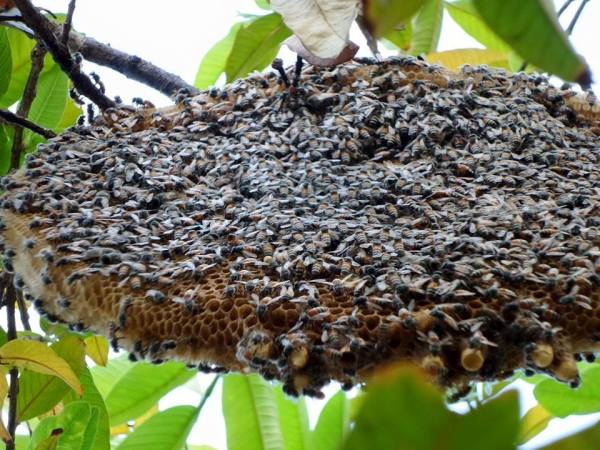
ஜூலை 4 சனிக்கிழமை
அமோகோ தேவதானாம் ச ப்ரமாத: கின்ன சாதயேத் – கதா சரித் சாகரம்
தேவர்களுடைய அருள் அதிகம் இருந்தால் எதைத்தான் சாதிக்க முடியாது?
(கொடுக்கும் தெய்வம் கூரையைப் பிய்த்துக் கொண்டு கொடுக்கும்)
ஜூலை 5 ஞாயிற்றுக்கிழமை
அலப்யம் ஹீனமுச்யதே
கிடைக்காவிட்டால் அது மட்டமானது (என்பர்)
(சீ! சீ! இந்தப் பழம் புளிக்கும் கதை)
ஜூலை 6 திங்கட் கிழமை
அபாவாதல்பதா வரம்
ஒன்றுமில்லாததைவிட கொஞ்சமாவது கிடைப்பது சிறந்ததே
Something is better than nothing
ஜூலை 7 செவ்வாய்க்கிழமை
அஸ்தி யத்யபி சர்வத்ர நீரம் நீரஜ மண்டிதம்
ரமதே ந மராலஸ்ய மானசம் மானசம் வினா – சுபாஷிதாவளி
எல்லா இடங்களிலும் தாமரை மலர்கள் மலர்ந்திருந்தாலும்
ஹம்ச பட்சியின் மனமானது மானஸரோவர் இல்லாத இடத்தில் ஈடுபடாது
(உள்ளுவதெல்லாம் உயர்வுள்ளல்– குறள்)

ஜூலை 8 புதன்கிழமை
ஆதுரோ விநயே நாஸ்தி
கஷ்டப்படுவோருக்கு விதிகள் கிடையாது.
(பசி வந்திடப் பத்தும் பறந்து போம்)
ஜூலை 9 வியாழக்கிழமை
உச்சேதும் ப்ரபவதி யன்ன சபத சப்திஸ்தன்னைசம் திமிரமபாகரோதி சந்த்ர: — சாகுந்தலம்
சூரியன் போக்கமுடியாத இருட்டை சந்திரன் போக்க முடியுமா?
((இந்தி பழமொழி:- ஜஹாம் கம் ஆவே சுயீ, கஹா கரே தல்வார்
ஊசி வேலை செய்ய முடியும் போது அரிவாள் எதற்கு?))
ஜூலை 10 வெள்ளிக் கிழமை
ஏகஸ்ய ஹி விவாதோத்ர த்ருஸ்யதே ந து ப்ராணின:
ஒரே ஒரு ஆள் இருக்குமிடத்தில் பிரச்சனை இல்லை
(இரண்டு கையும் சேர்ந்தால்தானே சப்தம் வரும்)
ஜூலை 11 சனிக்கிழமை
குலீனை: சஹ சம்யர்கம் பண்டிதை: சஹ மித்ரதாம்
ஜாதிபிஸ்க சமம் சக்யம் குர்பாணோ நாவசீததி – சாணக்யநீதி தர்பணம்
நல்ல குலத்தில் உதித்தவர்கள் தொடர்பு, அறிஞர்களுடன் நட்பு, சொந்தக்காரர்களுடன் நேசம் வைத்திருப்பவன் துன்பமடைய மாட்டான்.
ஜூலை 12 ஞாயிற்றுக் கிழமை
க உடுபேன தரதி சாகரம்
யார் சிறு படகு மூலம் கடலைக் கடக்க முடியும்?
ஜூலை 13 திங்கட் கிழமை
கீத்ருசஸ்த்ருணானாம் அக்னினா சஹ விரோத: – முத்ரா ராக்ஷசம்
புல்லுக்குத் தீ எதிரியாகும்

ஜூலை 14 செவ்வாய்க்கிழமை
குதேசேஸ்வபி ஜாயந்தே க்வசித்கேசின்மஹாயசா:-கதாசரித் சாகர்
கெட்ட இடங்களில் கூட நல்லவர்கள் உதிக்கலாம்
(சேற்றில் செந்தாமரையும் சிப்பியில் முத்தும் விளையும்)
ஜூலை 15 புதன்கிழமை
ஓதகாந்தம் ஸ்நிக்தோ ஜனோ அனுகந்தவ்ய: – சாகுந்தலம்
கடல் வரைக்கும் பிரியமுள்ளவர்கள் தொடர வேண்டும்
ஜூலை 16 வியாழக்கிழமை
க்வாபி ந கச்சேதனாஹூத:
எங்கேயும் அழையாமல் போகாதே
ஜூலை 17 வெள்ளிக் கிழமை
க்ஷீரேண தக்தஜிஹ்வஸ்தக்ரம் பூத்க்ருத்ய பாலக: பிபதி – ஹிதோபதேசம்
பாலினால் ஒரு முறை நாக்கு சுட்டவன், மோரைக் கண்டாலும் ஊதி ஊதிக் குடிப்பான்
அரண்டவன் கண்ணுக்கு இருண்டதெல்லாம் பேய்
சூடு கண்ட பூனை (தெனாலி ராமன் பூனை வளர்த்த கதை)
ஜூலை 18 சனிக்கிழமை
க்த்யோதோ த்யோததே தாவத் யாவன்னோதயதே சஸீ
உதிதே து சஹஸ்ராம்சௌ ந க்த்யோதோ ந சந்த்ரமா: — சார்ங்கதர பத்ததி
சந்திரன் இல்லாதபோதுதான் மின்மினிப் பூச்சி பிரகாசிக்கும்
சூரியன் உதித்துவிட்டாலோ மின்மினி எங்கே, சந்திரன் எங்கே!
(ஆலை இல்லாத ஊரில் இலுப்பைப் பூ சர்க்கரை)
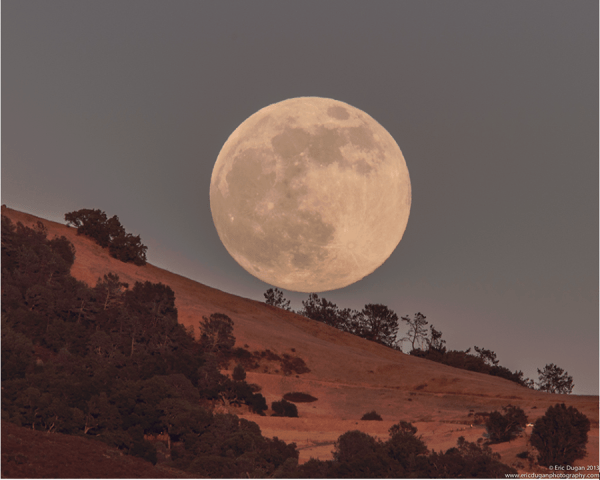
ஜூலை 19 ஞாயிற்றுக் கிழமை
கஜானாம் பங்கமக்னானாம் கஜா ஏவ துரந்தரா:
— ஹிதோபதேசம்
சேற்றில் சிக்கிய யானைக்கு யானைகள்தான் உதவ முடியும்
((முள்ளை முள்ளால்தான் எடுக்கலாம்
வைரத்தை வைரத்தால்தான் அறுக்கலாம்
யானையால் யானை யாத்தற்று- TIRUKKURAL))
ஜூலை 20 திங்கட் கிழமை
கதே ஜலே ஸ்யாத்கிமு சேது பந்த:
ஜலம் வற்றிய பின்னர் பாலம் கட்டி/இருந்து என்ன பயன்?
(கண்கெட்ட பிறகு சூரிய நமஸ்காரமா?)
ஜூலை 21 செவ்வாய்க்கிழமை
சந்தனப்ரபவோ ந தஹதி கிமனல: — காதம்பரி
சந்தன மரத்தால் உண்டான தீ சுடாதா?
(தங்க ஊசி என்றால் கண் குத்தாதா?)
ஜூலை 22 புதன்கிழமை
சின்னே மூலே நைவ சாகா ந பத்ரம் – சாணக்ய நீதி தர்பணம்
வேரே போன பின்னர் கிளை என்ன? இலை என்ன?
(தலைக்கு மேலே வெள்ளம் போனால் சாண் என்ன? முழம் என்ன?)
ஜூலை 23 வியாழக்கிழமை
ஜனானனே க:கரமர்பயிஷ்யதி – நைஷத காவ்யம்
ஊர் வாயை மூட முடியுமா? (யாரால் மூட முடியும்?
ஜூலை 24 வெள்ளிக் கிழமை
ஜலம் ஜலேன சம்ப்ருக்தம் மஹாஜலாய பவதி
சிறு துளி பெரு வெள்ளம்
ஜூலை 25 சனிக்கிழமை
தினமணிமபித: குதோ அந்தகார:
சூரியன் இருக்குமிடத்தில் இருட்டா?
((ராமன் இருக்கும் இடத்தில் காமன் இரான்
லெட்சுமி இருக்கும் இடத்தில் சரஸ்வதி இராள்))

ஜூலை 26 ஞாயிற்றுக் கிழமை
த்யஜேதேகம் குலஸ்யார்த்தே க்ராமஸ்யார்த்தே குலம் த்யஜேத் — சாணக்ய நீதி தர்பணம், மஹா பாரதம், பஞ்ச தந்திரம்
குலத்தின் நலனைக் காக்க உயிரே விடலாம்
கிராமத்தின் நலனைக் காக்க குலத்தையே விடலாம்
ஜூலை 27 திங்கட் கிழமை
தூரஸ்தா: பர்வதா ரம்யா: — சுபாஷித ரத்ன பாண்டாகாரம்
இக்கரைக்கு அக்கரை பச்சை
Distance lends enchantment to the view – English proverb
ஜூலை 28 செவ்வாய்க்கிழமை
ந கூப கனனம் யுக்தம் ப்ரதீப்தே வன்னினா க்ருஹே – ஹிதோபதேசம்
வீடு பற்றி எரியும் போது கிணறு தோண்டத் துவங்குவது சரியல்ல
(கண்கெட்ட பிறகு சூரிய நமஸ்காரமா?)
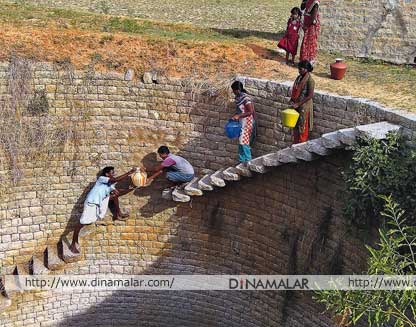
ஜூலை 29 புதன்கிழமை
த்ருஷ்டிபூதம் ந்யசேத் பாதம் – மனு
பாதத்தை நன்றாகப் பார்த்து வை
(ஆழம் தெரியாமல் காலை விடாதே)
ஜூலை 30 வியாழக்கிழமை
ந விடாலோ பவேத் யத்ர தத்ர க்ரீடந்தி மூஷகா:
பூனை இல்லாத இடத்தில் எலிகள் விளையாடும்
(தலை இல்லாவிடில் வால் ஆடும்)
ஜூலை 31 வெள்ளிக் கிழமை
நஷ்டே மூலே நைவ பலம் ந யுஷ்மம்
வேர் வீணாகிவிட்டால் பழம் கிடைக்காது
((முதல் கோணல் முற்றும் கோணல்
முதலுக்கே மோசம்))




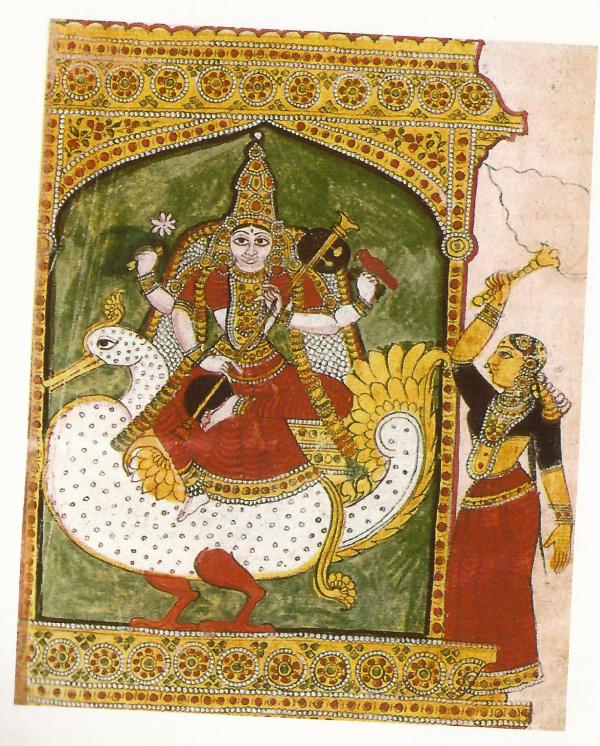











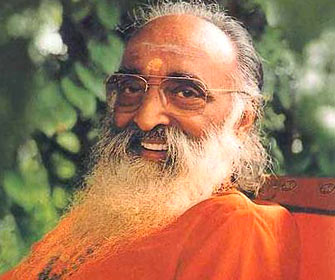























You must be logged in to post a comment.